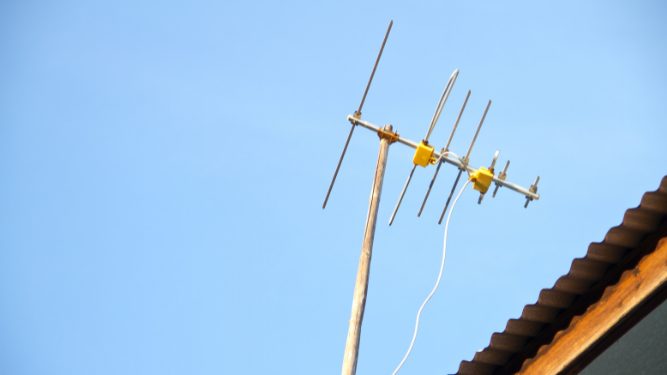When it comes to outdoor antenna installation, you must consider various factors. You’ll need to take extra steps, including running a copper wire from the antenna mast and coaxial cable to your house ground.
You may be wondering; how to properly ground an outdoor tv antenna. Keep reading because this article explains the fundamentals of antenna grounding. And here, I will teach you how to ground a TV antenna properly.
Why Is It Necessary to Ground a TV Antenna?
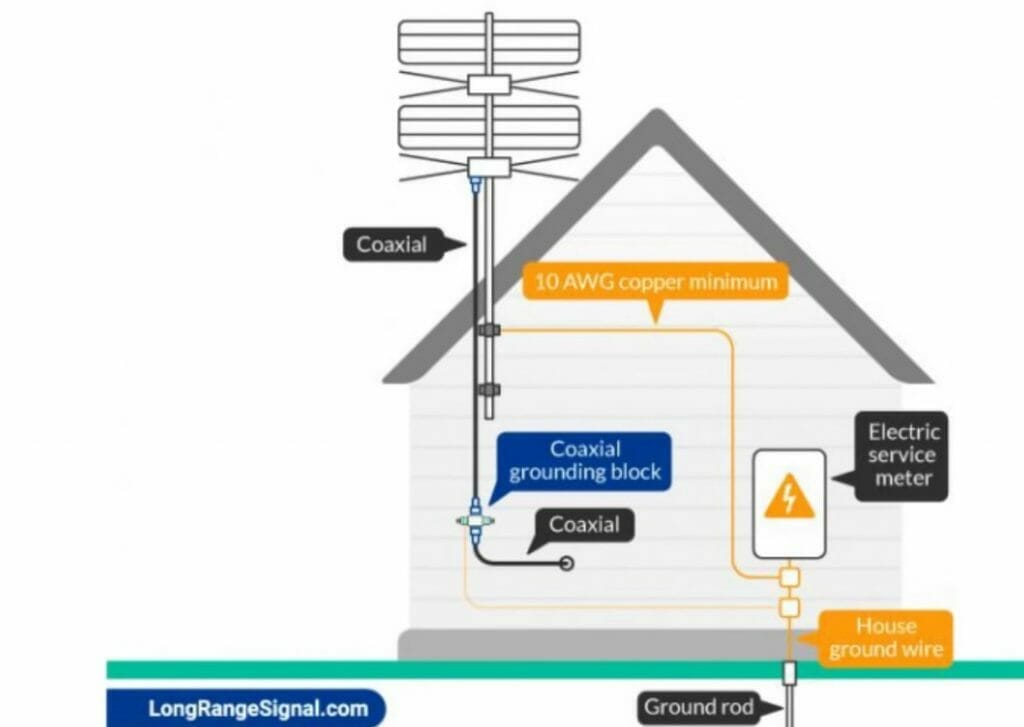
There are three basic purposes for grounding an outdoor TV antenna.
To Keep The Sustainability of Your TV Equipment
The severe storms and the surges surrounding them, whether from direct lightning strikes or the more ordinary build-up of static electricity, put your household appliances and electronics at risk.
It Is Legally Required
Many areas legally require homeowners to ground their outdoor antennas for televisions.
Reduce or Eliminate Electromagnetic Interference
Whether it’s an amplifier or television, the route from your antenna to your television will usually include connections with AC-powered devices. Ordinarily, electrical appliances leak tiny amounts of unnoticeable current under normal conditions. If left unchecked, this electricity will go up the coaxial antenna cable and into the house, causing noise and interfering with reception. It would be best to draw noise away from your antenna by grounding it.
For example, a direct lightning strike on your antenna might cause damage. The implications are impossible to foresee if this occurs; however, antenna grounding provides a pathway that helps reduce harm.
On the other hand, you may harm residential electrical systems by even indirect lightning strikes nearby.
Types of Grounding
There are three main types of grounding for a TV antenna: direct grounding, ground rod, and ground block.
- Direct grounding: Direct grounding involves attaching a grounding wire directly to the antenna mast and running it to a grounded metal object such as a cold water pipe or a ground rod. This method is typically used when the antenna is mounted on a wooden structure.
- Ground rod: A ground rod is a long, pointed metal rod that is driven into the ground. The grounding wire is attached to the rod, and the rod is typically used in conjunction with a ground block. This method is typically used when the antenna is mounted on a concrete structure.
- Ground block: A ground block is an installed device between the antenna and the building’s grounding system. It provides a secure and reliable connection between the two. This method is typically used when the antenna is mounted on a brick or stone structure.
The type of grounding required for a TV antenna is determined by local codes and regulations and the type of antenna and mounting structure.
There are a few ways you can find the local codes and regulations for grounding a TV antenna:
- Contact your local building department or code enforcement agency: These organizations can provide information on the local codes and regulations for grounding an antenna.
- Check with your television service provider: Your television service provider may have specific requirements for grounding an antenna, especially if you are using their equipment.
- Consult with a qualified professional: An electrician or other qualified professional should be familiar with the local codes and regulations and can guide the appropriate grounding method for your situation.
Let’s get started with out guide.
Materials Needed
Let’s take a look at the things that you’ll need to ground your antenna before we get started:
- Antenna Coax
- Mast
- Ground Clamp
- Coax Grounding Block
- Grounding Conductors
- Electric Service Meter Panel
- Power Service Grounding Electrode System
How To Properly Ground An Outdoor Tv Antenna
Grounding your TV antenna is not a tricky procedure; it won’t cost you much and may even provide you with some peace of mind.
In any case, I feel this article will be very beneficial in assisting you in understanding how to ground an outdoor TV antenna correctly.
Step #1: Position Your TV Antenna
Choose where you’ll put your antenna. Place your TV antenna in a place that offers adequate structural support. Whatever place you choose, keep in mind the orientation of your transmission broadcast towers to ensure the best possible line of sight.
Securely attach your antenna. Mount your TV antenna to your roof or the wall of your house. For safe and stable antenna installation, make sure to follow all installation guidelines that come with your antenna. If attaching to your roof, ensure you cover the screws with roof sealant to prevent water from getting in.
Step #2: Find the Service Grounding Conductor in Your Home
You should see a firm copper wire running from your switchboard through your wall to the outside if you go down to your basement and pinpoint your electrical panel. You will need to connect a grounding electrode or plate to this line.
Locate the system’s grounding conductor and secure it with a ground clamp. Ground Clamps are available in various shapes and variations on Amazon, and they’re reasonably priced. You can typically determine the clamp’s size by the diameter of the wire you’re clamping.
Your house’s grounding conductor might be anywhere from a #2 AWG to a #6 AWG, depending on where you live and the capacity of your service.
I propose that you purchase a #6 AWG ground wire online. Since stranded wire can become frail when exposed to the weather, so solid wire is recommended over the stranded wire.
Step #3: Antenna Ground Mast: How to Ground it Correctly
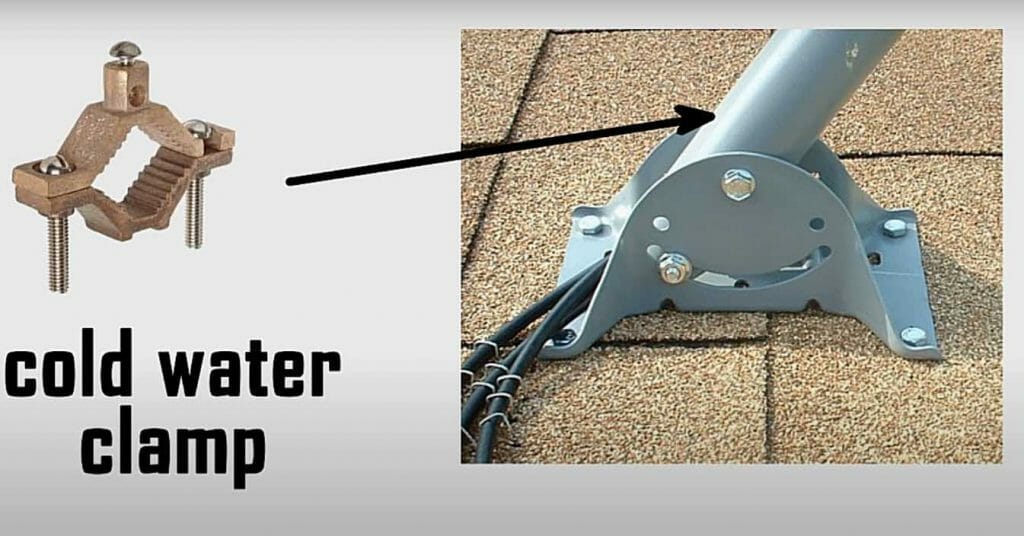
Link the other end of the ground wire you attached in step #2 to your antenna mast with an Antenna Ground Mast Clamp and secure it tightly. The diameter of your antenna mast will determine the clamp you’ll need.
Step #4: Coax Cable Grounding
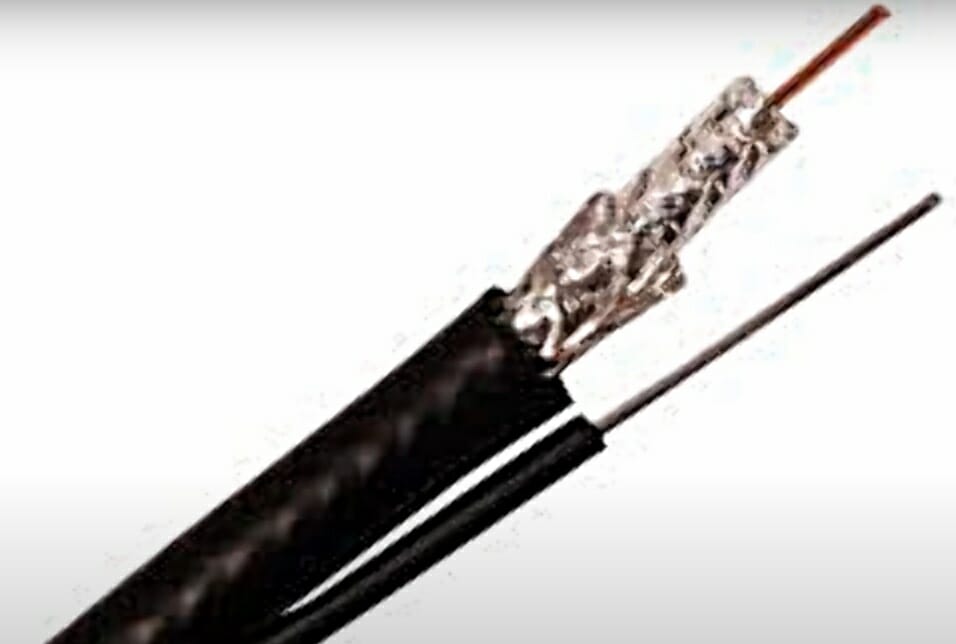
It’s now time to ground the coax line of your TV antenna. The coax cable alone can accumulate a static electric charge. A TV antenna discharge unit or grounding block can dissipate that charge appropriately (check your local code rules). (1)
You can obtain these Coax Ground Blocks on Amazon for a reasonable price. I also propose utilizing Coax Surge Protectors with a rating of at least 1500 MHz, which are not shown in this picture, to add another layer of safety.
More Tips for You
- Scrape the places where the metal sections come into contact on the antenna masts that are painted, extensively rusted, or have some form of coating to guarantee excellent bonding. Repainting is unnecessary after the antenna mast hardware and mount are appropriately linked.
- Use staples or an appropriate zip-screw style wire clamp to securely tie the grounding wire to the wall of your house.
- Ensure your ground wire lines are as short as possible and avoid 90-degree bends. If the ground wire must be bent, make the bends as gentle and smooth as possible.
FAQs
What Happens If I Don’t Ground My Antenna?
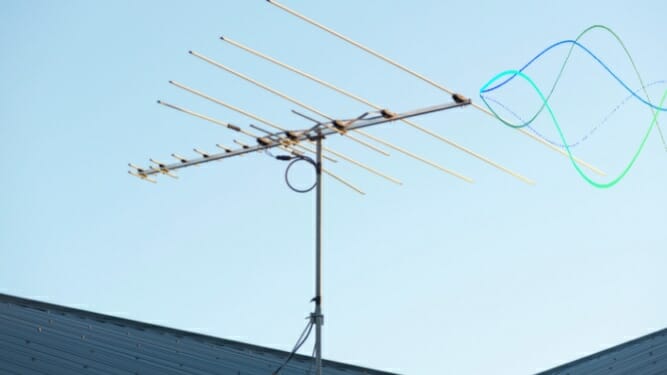
Grounding the antenna will assist it in avoiding being struck by lightning. Anything not grounded conductive will gather a static charge during a thunderstorm. The charge will attract lightning as it grows up. As a result, grounding the antenna discharges any charge that could attract a strike.
An ungrounded antenna that accumulates a charge can also inflict quite harm to your equipment, as the charge will discharge down your cable when it reaches a high enough potential, causing damage to your TV tuner. You’ll notice that your television can no longer tune into any channels. Have you ever heard someone say that their TV stopped working after a thunderstorm came through? This could be the reason. The grounding of all antennas and building wiring is necessary.
What Happens if Lightning Strikes?
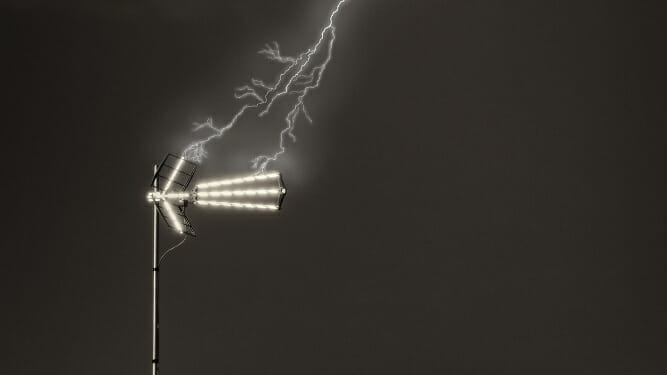
Even if you’ve adequately grounded your TV antenna in the unusual case of lightning strikes, there’s no certainty that it won’t be damaged.
The truth is that lightning will do whatever it wants when it strikes, and the best we can do is offer an excellent low impedance (resistance) conduit for that energy to return to the earth as swiftly and safely as possible. Nevertheless, the good news is that lightning strikes are very uncommon. (2)
If you’re still concerned about your equipment or television set being damaged in the event of a lightning strike, you may always disconnect the coax connection from your gadgets when a storm is approaching.
Is It Necessary to Ground an Indoor Antenna?
Why are ground indoor antennas (particularly those in attics) adequately shielded from thunderstorms and lightning?
Grounding the coaxial wire of an indoor antenna with a grounding block has two potential benefits, as it turns out:
- If your TV antenna requires an LTE or bandpass filter (to eliminate undesired cell phone signal disturbance), grounding the coaxial will improve the filter’s effectiveness. Unwanted radio frequency noise could get past the filter and into the coaxial connection.
- You will be protected from electric shock if you ground the coaxial line. The coaxial cable is then linked to your television or converter box. Even when it’s working correctly, all AC-operated equipment leaks. However, grounding the coaxial cable will safely divert any excess current to the ground if your equipment fails.
Remember that it’s typically grounded if your TV or converter box has a 3-prong power connection. Thus, there’s less risk of an electrical shock (and no need to ground the cable with a grounding block separately).
However, if it has a 2-prong power cable, there may be a risk of dangerous leakage current.
Here are other product and learning guides you can bookmark for future reference.
- How to get better TV reception with outdoor antenna
- How many TVs can you hook up to an outdoor antenna
- Benefits of an outdoor TV antenna
References
(1) electric charge – https://www.britannica.com/science/electric-charge
(2) lightning – https://www.nssl.noaa.gov/education/svrwx101/lightning/

